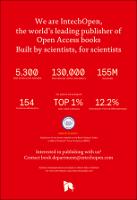Chapter Digital signal processing for optical communications and networks
Abstract
The achievable information rates of optical communication networks have been widely increased over the past four decades with the introduction and development of optical amplifiers, coherent detection, advanced modulation formats, and digital signal processing techniques. These developments promoted the revolution of optical communication systems and the growth of Internet, towards the direction of high-capacity and long-distance transmissions. The performance of long-haul high-capacity optical fiber communication systems is significantly degraded by transmission impairments, such as chromatic dispersion, polarization mode dispersion, laser phase noise and Kerr fiber nonlinearities. With the entire capture of the amplitude and phase of the signals using coherent optical detection, the powerful compensation and effective mitigation of the transmission impairments can be implemented using the digital signal processing in electrical domain. This becomes one of the most promising techniques for next-generation optical communication networks to achieve a performance close to the Shannon capacity limit. This chapter will focus on the introduction and investigation of digital signal processing employed for channel impairments compensation based on the coherent detection of optical signals, to provide a roadmap for the design and implementation of real-time optical fiber communication systems.
Keywords
optical communications, optical networks, digital signal processing, coherent detection, chromatic dispersion, polarization mode dispersion, laser phase noise, fiber nonlinearitiesDOI
10.5772/intechopen.68323Publisher
InTechOpenPublisher website
https://www.intechopen.com/Publication date and place
2017Classification
WAP (wireless) technology


 Download
Download